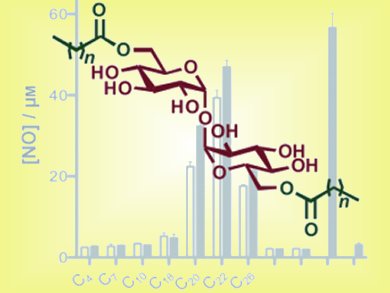Diacyltrehalose glycolipids, in the form of trehalose 6,6’-dimycolates (TDMs) and trehalose diesters (TDEs), are the most abundant extractible lipids from Mycobacterium tuberculosis. They have been shown to induce resistance against bacteria, to protect against parasitic infections, and are being tested as chemotherapeutics. So far, no correlation between glycolipid structure and their ability to activate macrophages has been made.
Bridget Stocker and colleagues, Malaghan Institute of Medical Research, Wellington, New Zealand, have synthesized TDEs with short, medium or long lipid chains to determine the effect of lipid length on innate immune recognition. The production of NO and cytokines by bone marrow-derived macrophages was measured as an indication of their TDE-induced activity. Longer lipids (C20–C26) induced both NO and cytokine production, indicating activation of macrophages, with C22 giving optimal activity. TDEs with short-chain lipids (⩽C18) were inactive.
This explains, for examle, why M. tuberculosis which expresses long-chain TDMs, triggers an innate immune response, while other pathogens evade immune recognition.
- Long-Chain Lipids Are Required for the Innate Immune Recognition of Trehalose Diesters by Macrophages
A. A. Khan, S. H. Chee, R. J. McLaughlin, J. L. Harper, F. Kamena, M. S. M. Timmer, B. L. Stocker,
ChemBioChem 2011.
DOI: 10.1002/cbic.201100451




